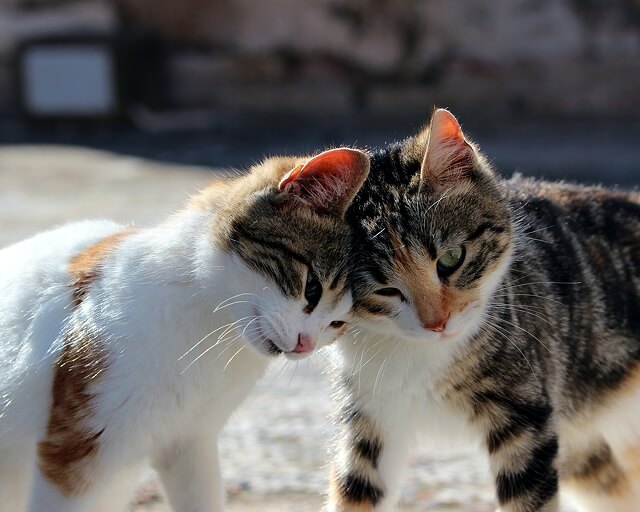All cat owners have experienced the joys of feline communication…whether we understood them completely or not. From having our feline friends cozy up on our lap (or laptop) to nudges against our legs, from gentle licks to the hands to furry butts in our faces in the morning, cats seem to have more than a few ways of telling us what they want. The question is, do we know how to listen?
Here are some of the more common ways that cats communicate with their owners, co-pets, and perceived threats. Read up and you can learn to have whole conversations with your kitty without ever opening your mouth!
- Purring doesn’t always equal happy. While is is certainly true that a purring, stretching, relaxed cat can be telling you to “pet and love me, please”, researches have discovered that the actual interpretation of a purr is closer to “don’t leave me, please”. Injured and sick cats are known to purr, possibly as a way of keeping their caregivers close at hand when the cat knows something is wrong. Purring can also mean “settle down” or “we’re getting too rowdy”, and may be followed up with a gentle (or not so gentle) nip to the fingers.
- Don’t shy away from rough kitty tongues or cold kitty noses. A cat approaching a person for the specific purpose of giving a tongue bath is a very special thing indeed. Cats give “kisses” and licks to people they like and trust as a greeting and happy “hello”. A cat in your face may be a surprise or an invasion of space, but really they are just telling you that they feel comfortable enough with you to get up close and touch their nose to yours. Cats like their space and protect it fiercely, so when they voluntarily share that space with you it is a sign of trust and comfort.
- Beware the stare. There are many different kinds of gazes when you’re talking about cats. Sleepy, half-lidded stares are the way most relaxed cats monitor their environment. However, open-eyed direct staring at either a person or other pet in the house can be one of the first signs of pending aggression or domination. Meeting and holding this gaze can be taken as a challenge to the cat, and can lead to an escalation in dominant or aggressive behavior. Monitor behavior like this closely to see if it is associated with other signs of aggression like arched backs, fur standing up stiff, or a straight, horizontal tail.
- Blink back and blink slow. One gaze you can feel comfortable with is the one including occasional slow blinks. In the feline world, trust is demonstrated by closing their eyes in the presence of another. By blinking slowly at their people, cats are indicating that they trust them and feel safe. Do your cat a favor and blink back if you see this…they will know that you trust them too.
- It’s not just that they want something. Most cat owners have experienced their furry friend rubbing and nuzzling against them when they arrive home from work or a night out. While it may be true that their cat is looking for dinner, veterinary behaviorists say that the cat is also greeting their person after being away; in essence saying “you’re back and I missed you!”. Feral cats have been observed exhibiting this same behavior after reuniting with each other after long hunts in the wild, demonstrating to each other that they are all back safe and sound with their clowder (the name for a group of cats).
Some cat behavior can be interpreted as either social or medical, depending on the context. Urinating or defecating outside of their litter pan, for example, may be signs of a urinary tract infection or digestive distress. However, they can also be signals that the cat doesn’t like the new litter, or that their legs are too stiff to make the trip down to the box in the basement. A cat that hides may just have found a new spot to feel safe, or they could be sick or in pain and want to hide it from perceived predators. This is why it is the role of the good pet owner to monitor their cats, and get to know what is “normal” for them and what is not. It is the responsibility of great cat owners to call their veterinarian if they ever have a question about why their cat is doing the things that they are doing. Veterinarians spend their lives observing the behaviors of all cats, healthy and not, and are your best resource to make sure your feline friend is happy, healthy, and secure.
Work hard to understand your cat and it will be one of the best relationships of your life. Plymouth Veterinary Hospital is here to make that relationship last!

